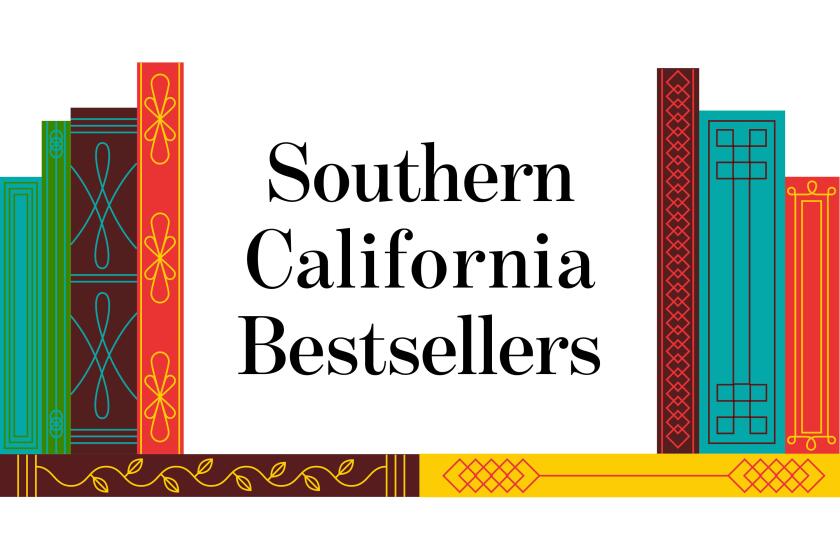Whatever happened to the teen movie?

- Share via
On the Shelf
Hollywood High: A Totally Epic, Way Opinionated History of Teen Movies
By Bruce Handy
Avid Reader Press / Simon & Schuster: 384 pages, $30
If you buy books linked on our site, The Times may earn a commission from Bookshop.org, whose fees support independent bookstores.
One day Bruce Handy was watching a teen movie — it could have been something new or maybe a vintage John Hughes, he doesn’t remember — when he was struck by the similarities between high school hallways and the wild frontier of classic westerns. “It’s this kind of lawless arena where people are trying to eke out their own ideas about justice,” he recently said over coffee near his home in New York City. “Then I started thinking about teen movies as a genre that you could use to tell an interesting social history and how they reflected different eras.”
This was the inception of “Hollywood High,” Handy’s incisive new history of not just teen movies, but teenagers themselves. Tracing the genre from the days of Mickey Rooney’s Andy Hardy, the aw-shucks, girl-crazy hero of an enormously popular movie series that started in 1937, to the dystopian adventures of Katniss Everdeen in the “Hunger Games” franchise, Handy (class of 1976) looks at the juvenile delinquents and the beach kids, the nerds and the mean girls.

In the process, he connects the post-World War II purchasing power of the generation that would become baby boomers to the creation of an entertainment boom designed to serve and depict teens. Teenagers, of course, always existed. But they didn’t really become a distinct demographic until the 20th century. As high school enrollment steadily increased, labor was increasingly left to adults, and teens created peer groups separate from either their families or the streets. As Handy writes, “Teenagers and teen movies would come of age hand in hand.”
Handy grew up in Palo Alto (and went on to attend Stanford University), under the sway of “American Graffiti.” George Lucas’ pre-“Star Wars“ 1973 hit, set amid the car culture of the Central Valley, tells the story of fresh high school graduates in the summer of 1962, played by actors including Ron Howard, Richard Dreyfuss and Cindy Williams, staring at their future with uncertainty. Handy was a high school sophomore when the movie came out; even though he wasn’t about to graduate, he says he remembers “this kind of tension of being in this sort of bubble phase of life that was about to end. I think that spoke to me subliminally.” But mostly he dug the wall-to-wall rock ‘n’ roll soundtrack, featuring Chuck Berry, the Beach Boys, Buddy Holly and other period stars.
Nothing says ‘summer’s here!’ than reading near a body of water. Here are 30 new books you need to read this season.
The author of several children’s books, a journalist for magazines including Vanity Fair and the New Yorker and a former writer for “Saturday Night Live,” Handy focuses on key films, moments and figures in teen movies starting with Rooney, who came to resent being defined by a character he played well after his teens (and whose hyper-libidinous exploits were most un-Hardy-like). There’s James Dean in “Rebel Without a Cause” (1955), which broke ground by featuring teens largely outside the context of adult supervision (and tapped into the youth-run-wild panic sweeping the nation in the ‘50s). There’s Jeff Spicoli, the archetypal stoner played by Sean Penn in the sexually frank and deceptively dark “Fast Times at Ridgemont High” (1982), and Cher, Alicia Silverstone’s Beverly Hills matchmaker living a modern-day Jane Austen novel, in “Clueless” (1995).

“Hollywood High” also makes its way out of the white middle-class milieu where so many teen movies are set. The comedy “Cooley High” (1975) helped pave the way for other movies about Black teens, including “Boyz n the Hood” (1991), John Singleton’s searing drama about a group of friends trying to survive in South-Central Los Angeles. With fans ranging from conservative former California Gov. Pete Wilson to Oscar-winning “Moonlight” filmmaker Barry Jenkins, “Boyz” struck a cultural nerve by depicting a teen world that audiences had scarcely ever seen onscreen. (With its man-to-man talks between Laurence Fishburne’s Furious Styles and his teen son, Tre, played by Cuba Gooding Jr., it could also bear an unlikely resemblance to the Hardy movies).
Coming soon to a theater near you: “John Hughes in Love.” And why not?
Teen movies don’t flow as fast and furious as they did even in the late ‘90s and early ‘00s, a period that brought titles including “She’s All That,” “Cruel Intentions,” “Mean Girls,” “10 Things I Hate About You,” “Scream,” “Can’t Hardly Wait” and the appropriately titled spoof “Not Another Teen Movie.” In a sense, however, the entire summer movie slate is now designed with teens — especially teen boys — in mind. Handy says he considered including a chapter on superhero movies before deciding they constitute their own category. As he writes, “It’s not that there aren’t still films that celebrate and explore the adolescent male mindset; it’s just that we don’t call them teen movies anymore. We call them superhero movies.” Horror too is a reliable moneymaker aimed largely at teens, even if the movies no longer carry titles like “I Was a Teenage Werewolf” (1957).
Movie teens have often been misunderstood by the adults in their lives, but in the long run they seem to have won. Films for grownups still exist, but they have a hard time making noise over the sound and fury of the stuff that ends up on eight screens at your local multiplex. Now more than ever, teen movies are just … movies.
More to Read
Sign up for our Book Club newsletter
Get the latest news, events and more from the Los Angeles Times Book Club, and help us get L.A. reading and talking.
You may occasionally receive promotional content from the Los Angeles Times.











